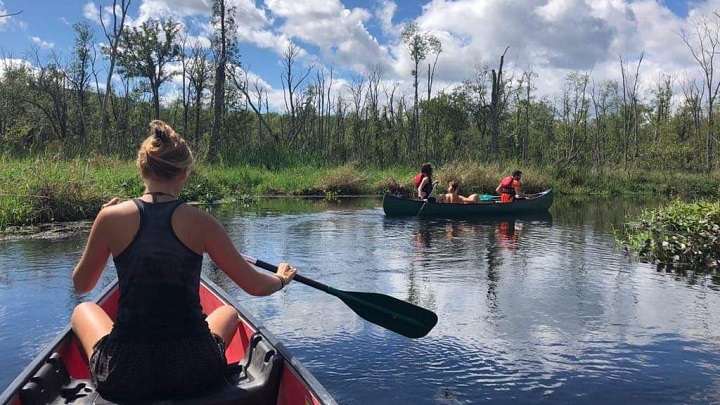Southern Swamps
The Southern United States is renowned for its diverse swampy regions. These areas are characterized by waterlogged soils and rich biodiversity. Swamps in this region provide crucial ecosystem services such as water filtration, flood control, and habitat for wildlife.
What Defines a Swamp?
- Waterlogged Soil: Swamps are characterized by persistent water saturation.
- Vegetation: They support diverse plant species, including trees, shrubs, and aquatic plants.
- Wildlife: These areas are home to numerous animal species, including amphibians, reptiles, and birds.
Major Swamps in the Southern US
Several notable swamps are found in the Southern US, each with unique features and ecological significance.
Everglades National Park, Florida
- Location: Southern Florida
- Size: Approximately 1.5 million acres
- Key Features:
- Largest subtropical wilderness in the US
- Home to diverse species such as the American alligator and the Florida panther
- Essential for water flow regulation in the region
Okefenokee Swamp, Georgia and Florida
- Location: Southeastern Georgia and Northern Florida
- Size: Around 700,000 acres
- Key Features:
- One of the largest intact freshwater ecosystems in the US
- Rich in biodiversity, including rare species like the black bear
- Significant for birdwatching and outdoor recreation
Atchafalaya Basin, Louisiana
- Location: Central Louisiana
- Size: Approximately 1 million acres
- Key Features:
- Largest river swamp in the US
- Critical for flood control and water filtration
- Supports diverse wildlife, including the endangered Louisiana black bear
Ecological Importance of Swamps
Swamps play vital roles in maintaining environmental balance and supporting biodiversity. Here are some key ecological benefits:
Water Filtration
- Natural Purification: Swamps filter pollutants from water, improving water quality.
- Flood Mitigation: They absorb excess water, reducing the risk of flooding.
Biodiversity Support
- Habitat Diversity: Swamps provide habitats for numerous plant and animal species.
- Migration and Breeding Grounds: They serve as crucial areas for bird migration and amphibian breeding.
Carbon Sequestration
- Climate Regulation: Swamps store large amounts of carbon, helping to regulate the Earth’s climate.
Cultural and Economic Significance
Swamps in the Southern US are not only ecologically important but also culturally and economically significant.
Cultural Heritage
- Historical Significance: Many Southern swamps have historical importance for Indigenous communities and early settlers.
- Local Folklore: Swamps are featured in local myths and legends, adding to their cultural richness.
Economic Contributions
- Tourism: Swamps attract tourists for activities such as birdwatching, fishing, and swamp tours.
- Recreational Activities: They support various recreational activities, contributing to local economies.
Conservation Efforts
Preserving swampy areas is crucial for maintaining their ecological functions and cultural value.
Challenges Facing Swamps
- Climate Change: Rising temperatures and changing precipitation patterns can alter swamp ecosystems.
- Development: Urban expansion and agriculture can encroach on swamp lands, threatening their health.
Conservation Strategies
- Protected Areas: Establishing national parks and wildlife reserves to safeguard swamp habitats.
- Restoration Projects: Efforts to restore degraded swamps and enhance their ecological functions.
Related Post:
What Type of Cancer Does Kate Have? A Comprehensive Overview
Swamps in the Southern US are vital ecosystems with significant ecological, cultural, and economic value. Protecting these areas is essential for preserving their unique biodiversity and the numerous benefits they provide. Through continued conservation efforts and public awareness, we can ensure that these important regions remain healthy and resilient for future generations.




